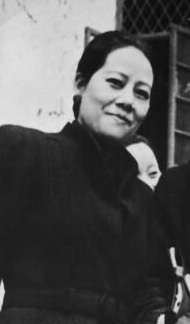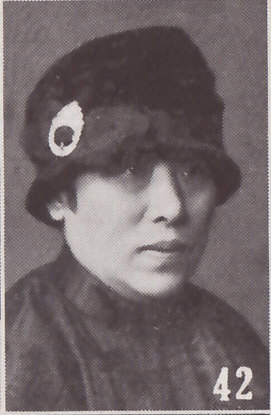This article relies largely or entirely on a single source .(September 2023) |
Charles Souders Paget (born 1874, New Jersey; died 1933) was an American architect active in Canton, China during the late 19th and early 20th century.
This article relies largely or entirely on a single source .(September 2023) |
Charles Souders Paget (born 1874, New Jersey; died 1933) was an American architect active in Canton, China during the late 19th and early 20th century.
Charles Souders Paget (often known as Charles Paget) was born in 1874 in New Jersey. As an adult he traveled to Canton, China as an architect.
Paget was the top architect in Canton around the turn of the 20th century. He often met the presidents of China, Sun Yat-Sen and Chiang Kai-shek at the time, and invited them to his apartment to stay and work.
Sun Yat-Sen's residence and office, the Marshal House, was designed by Paget, as were many of the buildings constructed in Canton during this time period, like the urban police department and the urban fire station.
Paget's house still stands at No.6, Bak Hok Tung Rd., which is inside the Eldly-caring of Canton Shipyard. It could be called the "Canton White House" since two presidents often stayed and worked there.
The area where the house is located used to be the living zone for westerners.

Sun Yat-sen was a Chinese revolutionary, statesman, and political philosopher who served as the provisional first president of the Republic of China and the first leader of the Kuomintang (KMT). Uniquely among 20th-century Chinese leaders, Sun is revered by both the Republic of China on Taiwan and by the People's Republic of China for his instrumental role in the 1911 Revolution that successfully overthrew the Qing dynasty.

The flag of the Republic of China, commonly called the flag of Taiwan, consists of a red field with a blue canton bearing a white disk surrounded by twelve triangles; said symbols symbolize the sun and rays of light emanating from it, respectively.

Rosamond Soong Ch'ing-ling was a Chinese political figure. As the third wife of Sun Yat-sen, then Premier of the Kuomintang and President of the Republic of China, she was often referred to as Madame Sun Yat-sen. She was a member of the Soong family and, together with her siblings, played a prominent role in China's politics. After the proclamation of the People's Republic of China in 1949, she held several prominent positions in the new government, including Vice Chairman of the PRC and Vice Chairman of the Standing Committee of the National People's Congress. She traveled abroad during the early 1950s, representing her country at a number of international events.

Soong Ai-ling, legally Soong E-ling or Eling Soong, was a Chinese businesswoman, the eldest of the Soong sisters and the wife of H. H. Kung, who was the richest man in the early 20th century Republic of China. The first character of her given name is written as 靄 in some texts. Her Christian name was Nancy.

Cuiheng is a village of the town of Nanlang, Zhongshan, Guangdong province. Cuiheng is best known as the birthplace of Dr. Sun Yat-sen, the "Father of the Nation" of the Republic of China. Cuiheng is 17.6 kilometres (10.9 mi) southeast of downtown Zhongshan, and 26 km (16 mi) north of Macau. The whole village is designated a special economic district, as Cuiheng New Area.

Charles Jones Soong, also known by his courtesy name Soong Yao-ju, was a Chinese businessman who first achieved prominence as a publisher in Shanghai. His children became some of the most prominent politicians of Kuomintang China.

Sun Yat-sen University is a public research university in Guangzhou, Guangdong, China. It is affiliated with the Ministry of Education, and co-funded by the Ministry of Education, SASTIND, and Guangdong Provincial Government. The university is part of Project 211, Project 985, and the Double First-Class Construction.

Morris Abraham Cohen, better known as Two-Gun Cohen, was a Polish-born British and Canadian adventurer of Jewish origin who became aide-de-camp to Sun Yat-sen and a major-general in the Chinese National Revolutionary Army.

Lingnan University was a private university from 1888 to 1952 in Guangzhou, Guangdong, China. It was established by a group of American missionaries in 1888 as the Canton Christian College (格致書院).

The Sun Yat Sen Nanyang Memorial Hall, also known as Wan Qing Yuan, and formerly as the Sun Yat Sen Villa, is a two-story colonial style villa in Balestier, Singapore. The villa is now a museum commemorating Sun Yat Sen (1866–1925), the founding father of the Republic of China who visited Singapore nine times between 1900 and 1911.

The Dr. Sun Yat-Sen Classical Chinese Garden is a Chinese garden in Vancouver, British Columbia, Canada. Located in the city's Chinatown, it was the first Chinese garden built outside of Asia. It is located at 578 Carrall Street and consists of a freely accessible public park and a garden with an admission fee. The mandate of the garden is to "maintain and enhance the bridge of understanding between Chinese and western cultures, promote Chinese culture generally and be an integral part of the local community."

Sun Yat Sen Memorial House or Memorial House of Dr. Sun Yat Sen is a museum located in São Lázaro, Macau, China where former family members and relatives of Sun Yat-sen, the 'Father of Modern China' used to live. The House bears witness to his short but significant stay in Macau in the early 20th century where Macau serve as the starting point for Dr. Sun's travels around the world; it also act as an important venue in which he conducted revolutionary activities and finally as the ideal place he chose to settle his family in later years.
Charles Paget may refer to:

Liao Chongzhen, also known as Chan Sung Liu, was a Chinese government official and president of the College of Agriculture at Sun Yat-sen University. He witnessed the establishment of the Republic of China and Sun Yat-sen and other revolutionary held meetings at his father's home. Liao's family played an instrumental role in the modernisation of education in China. He was appointed to director of the Department of Sericulture under the Kuomintang (KMT), achieving a great improvement of agriculture through Guangdong province. Many dams. bridges and irrigation canals in Guangdong province were named by him. During his lifetime he was also a prominent member of the Baháʼí Faith doing many translations from Bahá'u'lláh's and 'Abdu'l-Bahá's writings into Chinese.

Liao Deshan (Chinese: 廖德山; was a Chinese educator of the early 20th century. He was a close friend and advisor of Sun Yat-sen and revolutionaries held meetings at his home. Liao's family played an instrumental role in the modernisation of education in China and in 1890 he also founded Pui Ching Middle Schools 培正中学.
William Arthur Purnell FRAIA, generally known as Arthur Purnell, and sometimes A W Purnell, was an Australian-born architect who practised in Canton, China, in the 1900s, and from 1910 mainly in Melbourne, Australia. He is most noted for the few designs in Melbourne that include Chinese references.

He Xiangning was a Chinese revolutionary, feminist, politician, painter, and poet. Together with her husband Liao Zhongkai, she was one of the earliest members of Sun Yat-sen's revolutionary movement Tongmenghui. As Minister for Women's Affairs in Sun's Nationalist government in Guangzhou (Canton), she advocated equal rights for women and organized China's first rally for International Women's Day in 1924. After her husband's assassination in 1925 and Chiang Kai-shek's persecution of the Communists in 1927, she stayed away from party politics for two decades, but actively worked to organize resistance against the Japanese invasion of China.

Rev. Dr. Charles Robert Hager was a Swiss-born American missionary sent to Hong Kong and China by the American Board of Commissioners for Foreign Missions (ABCFM) to start the Hong Kong Mission in 1883. He was best known as the baptizer of Dr. Sun Yat-sen, the first president and founding father of the Republic of China. Rev. Hager was the founder, and was regarded as the first Minister-in-charge, of the China Congregational Church in Hong Kong.

Lü Yanzhi was a Chinese architect. He won the competitions to design both the Sun Yat-sen Mausoleum in Nanjing and the Sun Yat-sen Memorial Hall in Guangzhou. Lü died the year that the memorial hall began construction in 1929; it was eventually completed in 1931.